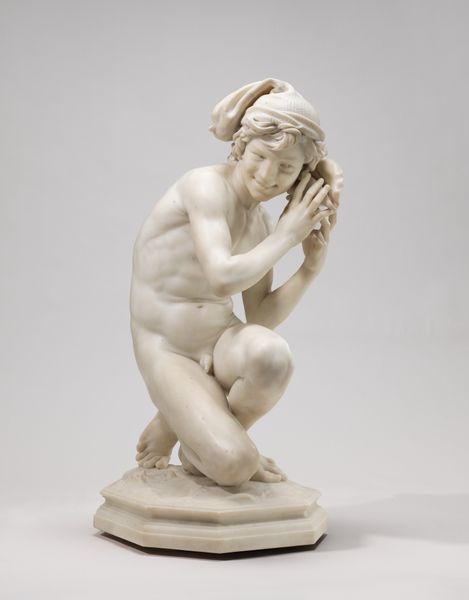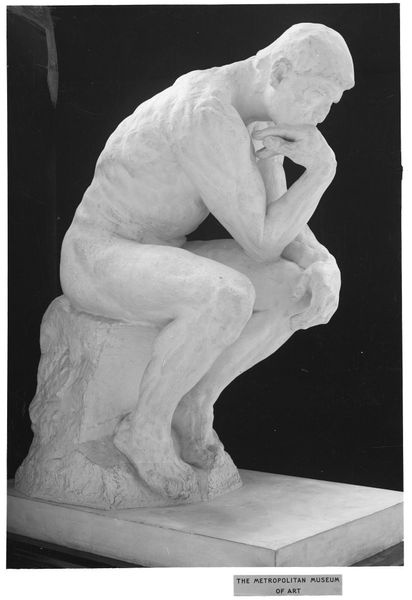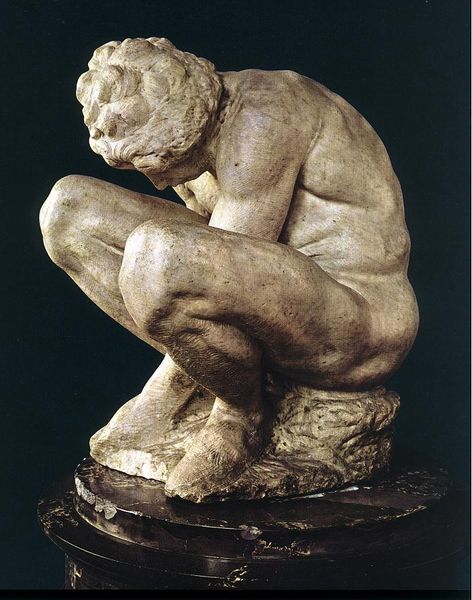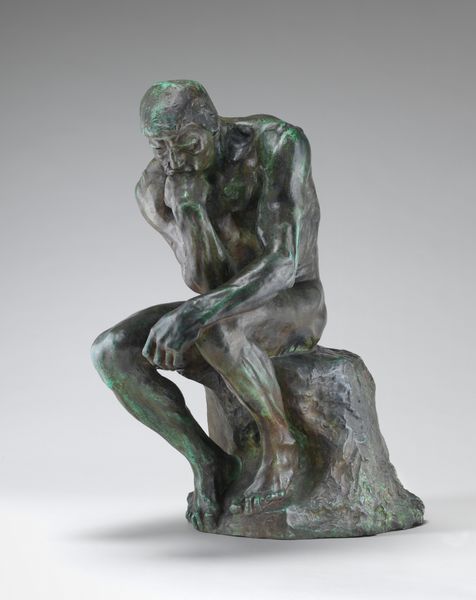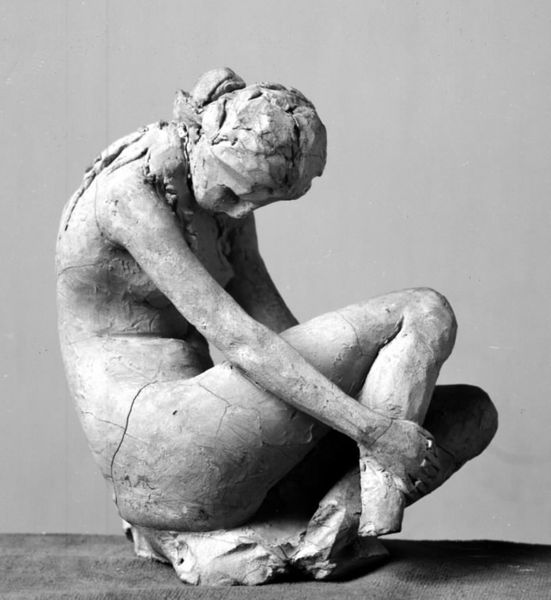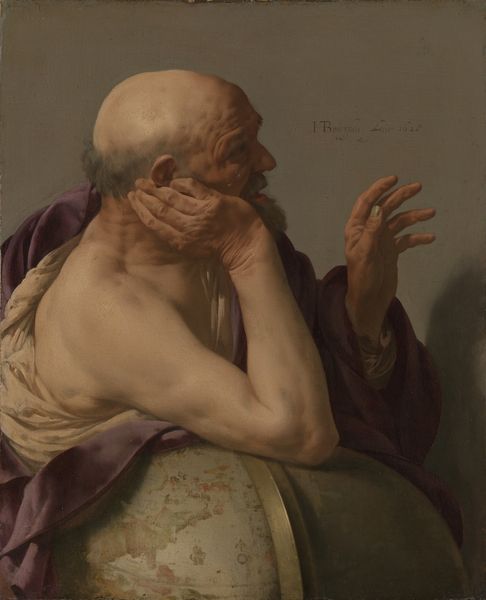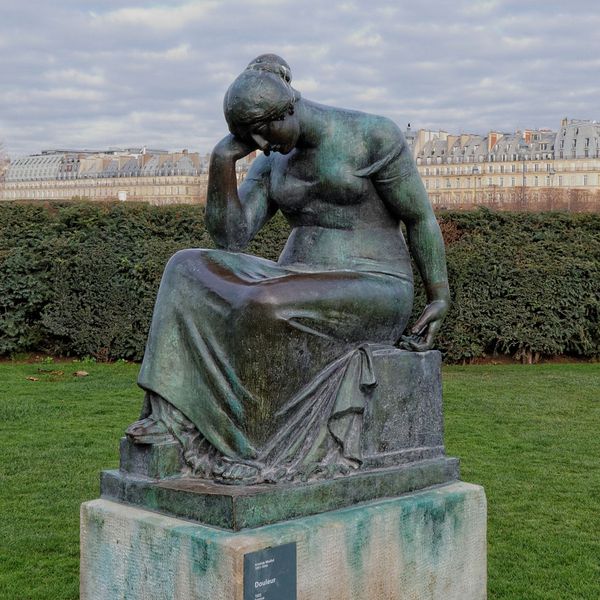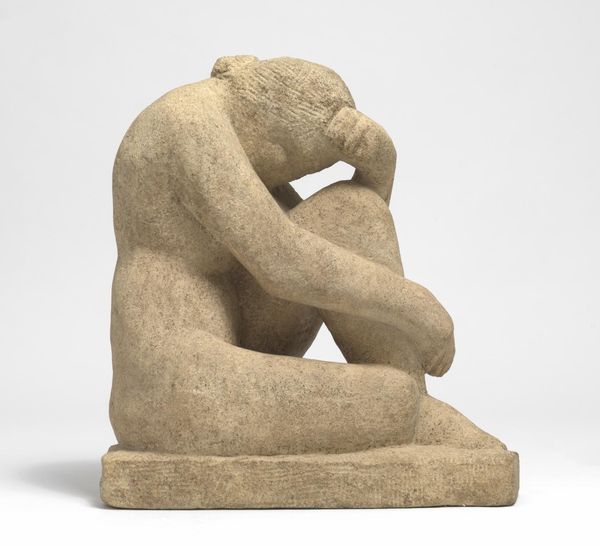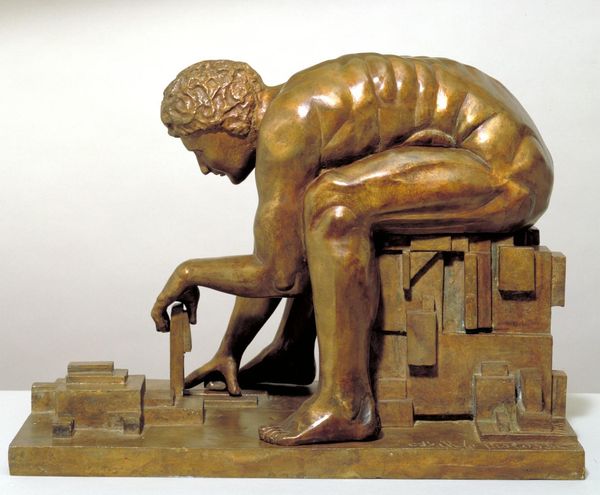
carving, bronze, sculpture
#
portrait
#
statue
#
carving
#
symbol
#
sculpture
#
bronze
#
figuration
#
sculpture
#
symbolism
#
statue
Copyright: Public domain
Curator: Before us stands Auguste Rodin’s “The Thinker,” created around 1882. This example, a bronze casting, currently resides at the Ny Carlsberg Glyptotek in Copenhagen. What are your initial impressions? Editor: The sculpture is…melancholy. There's such inward focus and concentrated weight in the figure. The patina of the bronze only amplifies this with its darkened recesses and contrasting green oxidation. It seems ancient, burdened. Curator: It's intriguing to view it through the lens of social and historical contexts. Consider the figure's inherent masculinity—its potential symbolism, in light of contemporary intersectional feminism and gender constructs. Are we meant to celebrate intellectualism here or challenge its gendered expectations? Editor: I see potent symbolism rooted in the Renaissance tradition. He embodies contemplation, knowledge… a very direct link to humanist ideals that valued human reason. His pose - the hand to the chin - speaks to centuries of artists depicting philosophical inquiry. Curator: Right. Yet, within those ideals lay exclusive and exclusionary foundations, mostly patriarchal. The sculpture’s imposing size contributes. Editor: True. But also the pose could be interpreted as vulnerability. The lack of external interaction makes him susceptible. Curator: Precisely. Vulnerability, yes, yet it becomes more compelling in understanding labor class struggles of the era. He’s not thinking about abstract concepts disconnected from earthly hardship, but very concretely of class struggle, for instance, Rodin was thinking about labor issues while creating the sculpture. Editor: The symbol has taken on broader implications over time. From intellectual pursuits to just generally 'thinking'. You know it’s easy to find that familiar gesture echoed through all layers of society. I wonder, do people of any kind project themselves onto this image of humanity caught in reflection? Curator: Ultimately, Rodin's "The Thinker" compels ongoing dialogues about knowledge, labor, gender and identity—all critical subjects of art history. Editor: Yes. And even how these powerful symbols shift meanings through centuries and within diverse cultures that find their own story within the silent gaze of ‘the thinker’.
Comments
No comments
Be the first to comment and join the conversation on the ultimate creative platform.


